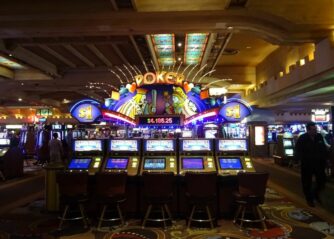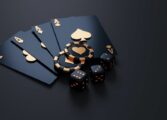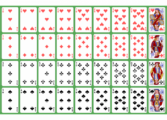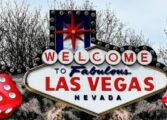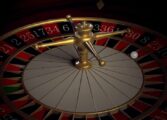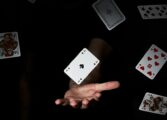Bingo Slang: Exploring the Language of Casino Games

Introduction: Unveiling the World of Bingo Slang
Bingo, a popular casino game enjoyed by many, has its own unique language and terminology. For those who are intrigued by the world of casino games, understanding the nuances of bingo slang can enhance the overall experience. This article aims to provide a comprehensive overview of bingo slang, its historical evolution, and its significance to casino game enthusiasts.
I. Understanding Bingo Slang: A Guide for Casino Game Enthusiasts

Before delving into the historical development of bingo slang, it is crucial to establish a foundation for those who may not be familiar with the game. Bingo is often played in dedicated halls or online platforms, where players mark off numbers on a card as they are called out. To add an element of excitement and camaraderie, bingo players have coined their own language over the years. Here are some important points to remember about bingo slang:
– Bingo Nicknames:
Key numbers in the game often have unique nicknames associated with them. For instance, number 17 is commonly referred to as “Dancing Queen” due to its resemblance to the popular song by ABBA. Knowing these nicknames can create a sense of community and make the game more enjoyable.
– Calls Phenomenon:
In bingo, the process of announcing the numbers is known as “calls.” These calls have their own distinctive style, with certain phrases repeatedly used. Commonly used calls include “Two Fat Ladies” for number 88, “Legs Eleven” for number 11, and “Doctor’s Orders” for the number 9. Familiarizing oneself with these calls can heighten the excitement during gameplay.
– Chatting Etiquette: Bingo halls and online platforms often encourage social interaction among players. To engage in conversations with others, it is essential to understand the common abbreviations and acronyms used for quick messaging. For example, “GL” stands for “good luck,” “WTG” means “way to go,” and “LOL” represents “laugh out loud.” Being well-versed in such terminology allows players to connect and communicate effortlessly.
II. The Historical Evolution of Bingo Slang
The origins of bingo slang can be traced back to the early 1900s when the game gained popularity in the United States and Europe. As the community aspect of bingo grew, players began inventing playful terms to inject fun and personality into the game. Over time, these unofficial terms not only became widely adopted but also evolved to reflect cultural references.
– World War II Influence: During World War II, bingo became a popular pastime among soldiers. In an effort to boost morale, soldiers adapted bingo slang to reflect their shared experiences and camaraderie. The number 9, for example, became known as “Doctor’s Orders” because it was the maximum number of beers a soldier could request from the doctor without being accused of alcoholism.
– Cultural References: Bingo slang also draws inspiration from popular culture, including movies, songs, and celebrities. For instance, the number 23 is often referred to as “Michael Jordan” due to the basketball player’s jersey number. Similarly, “Half a Crown” represents the number 2 and 6, signaling a common amount of money used in the past.
– Modern Incorporation: With the advent of technology, bingo has transitioned into online platforms, bringing with it modern influences on slang. This includes references to emojis, internet acronyms, and even viral videos. As a result, newer players are able to connect with a diverse range of bingo enthusiasts, creating a dynamic and evolving linguistic landscape.
III. Increasing the Likelihood of Being Featured in Google’s Snippets
Now that we have covered the essentials of bingo slang and its historical development, it is important to structure the text in a way that increases the likelihood of being featured as a Google snippet. Google’s featured snippets provide users with concise and informative answers to their queries. To optimize the chances of being showcased, here is an effective structure:
1. Start with an Tag: “Unveiling the Language of Bingo Slang at Casinos.”
2. Use H2 Tags: These can be employed throughout the article to highlight key sections such as “Understanding Bingo Slang” and “The Historical Evolution of Bingo Slang.”
3. Bulleted Lists: These visually appealing elements help to break down information concisely. For example:
– Bingo Nicknames:
– “Dancing Queen” – number 17
– “Two Fat Ladies” – number 88
– Calls Phenomenon:
– “Legs Eleven” – number 11
– “Doctor’s Orders” – number 9
– Chatting Etiquette:
– “GL” – good luck
– “WTG” – way to go
By structuring the text in a clear and organized manner with relevant headings, bulleted lists, and informative content, the chances of achieving a featured snippet on Google will significantly increase.
Conclusion
For those fascinated by casino games, delving into the world of bingo slang can enhance the overall gameplay experience. Understanding the intricacies of bingo nicknames, calls phenomenon, and chatting etiquette creates a sense of community and excitement. As bingo slang continues to evolve throughout history, embracing cultural references and modern influences ensures that this unique language remains dynamic and engaging. So, join in the fun, immerse yourself in the language of bingo, and may the bingo gods smile upon you!

